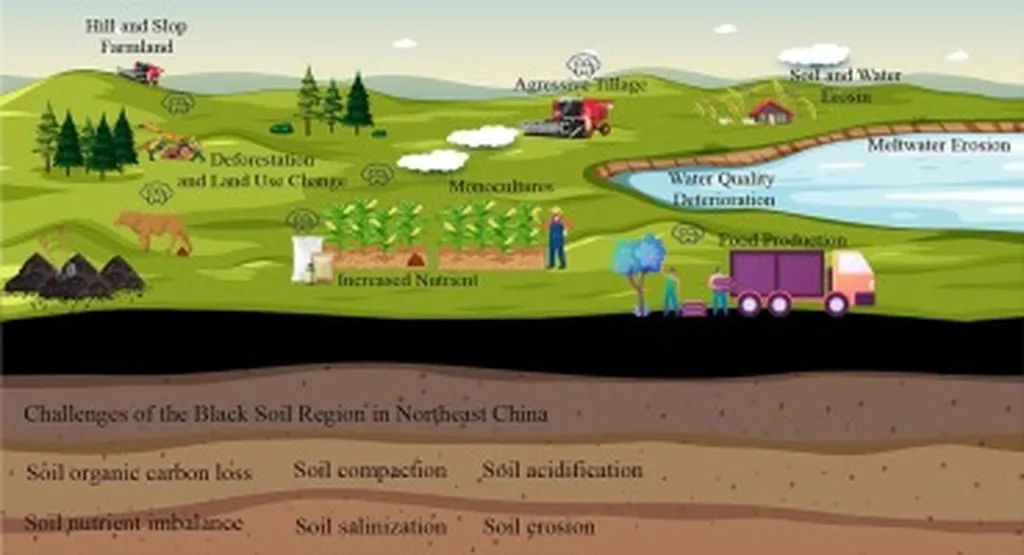In the vast black soil region of Northeast China, a silent revolution is taking place beneath the fields, one that could reshape the future of agriculture and energy. A groundbreaking study led by Bin Huang, a researcher from the College of Resources and Environment at Shanxi Agricultural University and the State Key Laboratory of Efficient Utilization of Arable Land in China, has shed new light on the impacts of conservation tillage on soil organic carbon (SOC) and crop yield. The findings, published in the Journal of Agriculture and Food Research (translated to English as “Journal of Agricultural and Food Research”), offer promising insights for farmers, policymakers, and the energy sector alike.
The study, a meta-analysis of 527 observations from 140 publications, reveals that conservation tillage practices—no-till (NT) and reduced tillage (RT)—significantly enhance SOC sequestration and crop yield. On average, conservation tillage increased SOC by 4.17% and crop yield by 2.69%. Notably, no-till practices led to a larger increase in SOC (+5.92%) compared to reduced tillage (+0.97%), while the opposite trend was observed for crop yield.
“The variable responses of SOC and crop yield to conservation tillage were mainly affected by climatic conditions, management practices, and soil properties,” Huang explained. The study found that conservation tillage achieved the most pronounced increases in both SOC and crop yield in soils with low initial SOC content and high silt + clay content, especially under mean annual temperature >8°C and humidity index >0.45.
The research also highlighted the importance of combining straw mulching and continuous cropping to amplify the benefits of conservation tillage. These positive effects peaked in the 10th year after implementation, indicating the optimal duration for maximizing SOC sequestration and productivity.
For the energy sector, the implications are substantial. Enhanced SOC sequestration not only improves soil fertility and crop yields but also contributes to mitigating global warming by storing carbon in the soil. This dual benefit makes conservation tillage an attractive option for farmers and energy companies investing in sustainable agricultural practices.
“Combining straw mulching and continuous cropping further amplified the benefits of conservation tillage,” Huang noted. This finding underscores the importance of integrated management practices in achieving sustainable agriculture and energy goals.
The study emphasizes that medium-term conservation tillage with straw mulching helps maximize soil carbon sequestration and crop yield under warm-humid conditions in infertile black soils. This research offers a scientific basis for sustainable regional agriculture and could shape future developments in the field, providing a roadmap for farmers and energy companies to adopt more sustainable practices.
As the world grapples with the challenges of climate change and food security, the insights from this study are more relevant than ever. By embracing conservation tillage and integrated management practices, we can pave the way for a more sustainable future, one that benefits both the environment and the economy.

